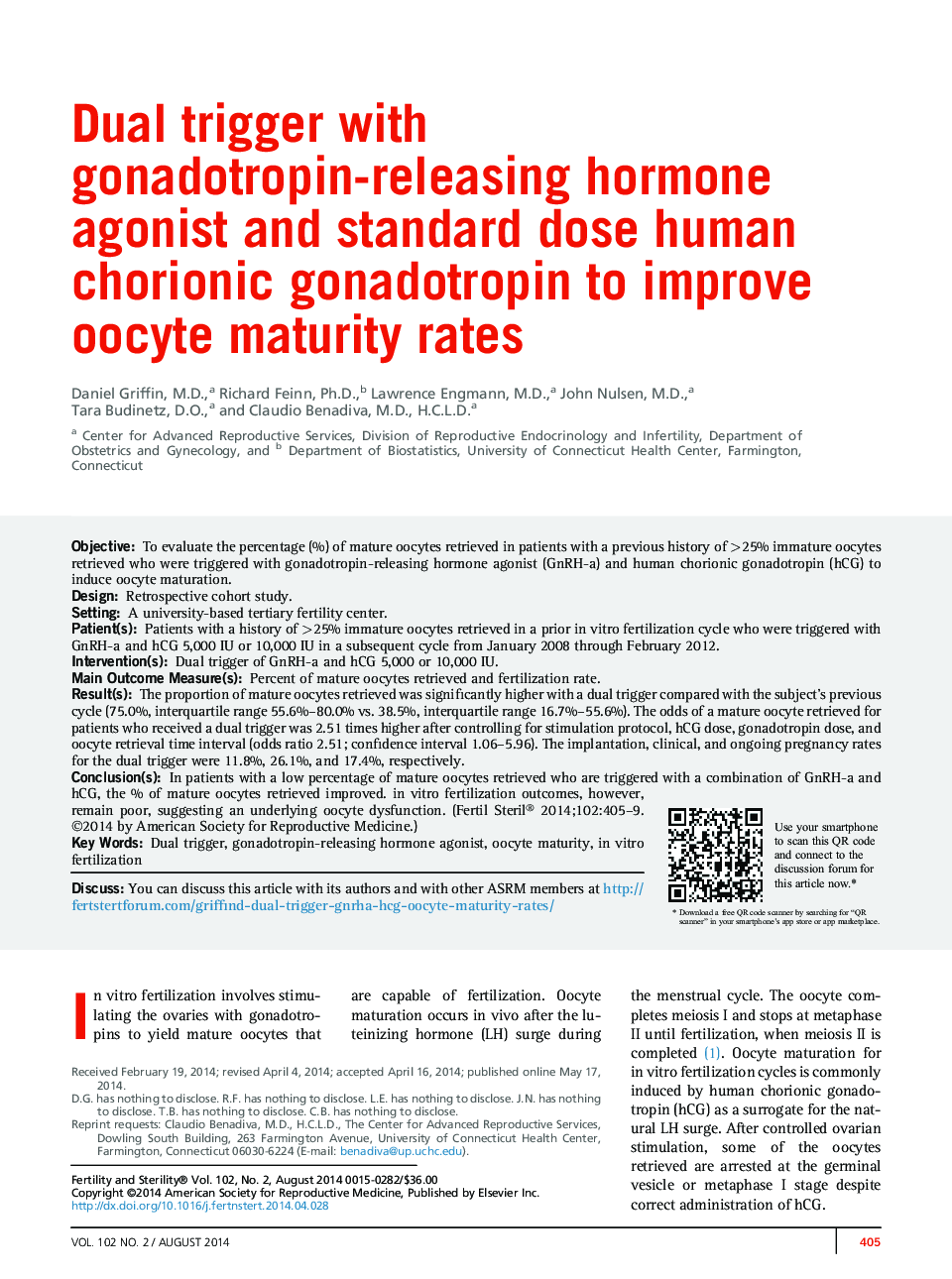| Article ID | Journal | Published Year | Pages | File Type |
|---|---|---|---|---|
| 6181695 | Fertility and Sterility | 2014 | 5 Pages |
ObjectiveTo evaluate the percentage (%) of mature oocytes retrieved in patients with a previous history of >25% immature oocytes retrieved who were triggered with gonadotropin-releasing hormone agonist (GnRH-a) and human chorionic gonadotropin (hCG) to induce oocyte maturation.DesignRetrospective cohort study.SettingA university-based tertiary fertility center.Patient(s)Patients with a history of >25% immature oocytes retrieved in a prior in vitro fertilization cycle who were triggered with GnRH-a and hCG 5,000 IU or 10,000 IU in a subsequent cycle from January 2008 through February 2012.Intervention(s)Dual trigger of GnRH-a and hCG 5,000 or 10,000 IU.Main Outcome Measure(s)Percent of mature oocytes retrieved and fertilization rate.Result(s)The proportion of mature oocytes retrieved was significantly higher with a dual trigger compared with the subject's previous cycle (75.0%, interquartile range 55.6%-80.0% vs. 38.5%, interquartile range 16.7%-55.6%). The odds of a mature oocyte retrieved for patients who received a dual trigger was 2.51 times higher after controlling for stimulation protocol, hCG dose, gonadotropin dose, and oocyte retrieval time interval (odds ratio 2.51; confidence interval 1.06-5.96). The implantation, clinical, and ongoing pregnancy rates for the dual trigger were 11.8%, 26.1%, and 17.4%, respectively.Conclusion(s)In patients with a low percentage of mature oocytes retrieved who are triggered with a combination of GnRH-a and hCG, the % of mature oocytes retrieved improved. in vitro fertilization outcomes, however, remain poor, suggesting an underlying oocyte dysfunction.
